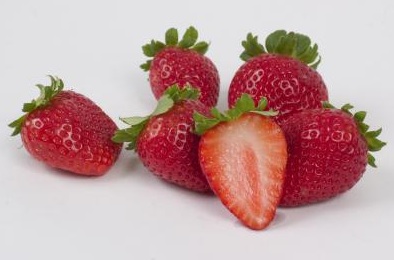
Features
Fruit
Production
Environmental effects of cold-climate strawberry farming
September 9, 2009 By HortScience
 September 8, 2009,
September 8, 2009,
Beltsville, MD – Strawberries are increasingly grown on small-scale farms in
direct-to-consumer markets, which are gaining popularity. But how do growing
methods designed to ensure successful strawberry production in colder climates
affect the environment?
September 8, 2009,
Beltsville, MD – Strawberries are increasingly grown on small-scale farms in
direct-to-consumer markets, which are gaining popularity. But how do growing
methods designed to ensure successful strawberry production in colder climates
affect the environment?
 |
|
Matthew D. Stevens,
currently with North Carolina State University, and a team of USDA-Agricultural
Research Services (ARS) researchers developed an experiment to shed light on that
question. Stevens conducted the research while working as a graduate student at
the USDA-ARS. Three methods of growing strawberries were compared for the study
published recently in HortScience.
The conventional matted
row system (CMR) has been the primary method in colder areas. Recently, use of
a second method, cold-climate plasticulture (CCP), has increased. Both rely on
fumigation and pesticides to protect plants, but use of these elements is being
restricted because of environmental concerns. This has led to the development
of alternative pest-control measures, including advanced matted row (AMR), the
third method tested in the study.
Growing practices were
evaluated on sustainability, soil and water conservation, and reduction of
movement of soil, nutrients, and pesticides from fields to nearby water
sources. Pesticides, nutrients, and soil particles moved from fields to water
systems, even through naturally occurring runoff, have significant negative
effects for aquatic ecosystems.
In the AMR beds, a cover
crop was planted and later mowed down to create a protective vegetative layer,
which reduces weed growth. Both CMR and CCP methods use plastic sheeting to
limit weeds. As few insects were observed, no insecticides were used. Automated
runoff samplers kept track of the water and soil movement. Runoff samples were
analyzed for nitrate, ammonium, and pesticide concentrations. Plants were also
analyzed for carbon and nitrogen.
Annual mean soil loss was
significantly greater in the CMR compared to the AMR, but neither the CMR nor
the AMR annual mean soil loss was significantly different from the annual mean
soil loss of the CCP in 2002. Though the annual mean soil losses for CMR and
AMR were significantly greater than for CCP, the difference between CMR and AMR
was not significant in 2003. Annual mean soil losses in 2004 were not
significantly different across the planting methods.
The results indicate that
the intensity, duration, and timing of precipitation affected the soil and
pesticide losses and runoff volume more than the type of planting system.
Timing of fertilization is
very important in CMR production because fertilizer is sprayed onto the plants.
This method produced low nutrient uptake and high nutrient runoff. AMR and CCP
plants were fertilized underground and resulted in higher nutrient uptake and
lower nutrient runoff compared with CMR. Furthermore, CMR plots had the
greatest pesticide losses. This makes the CMR system the least effective in
controlling soil and pesticide losses. The AMR system was best for erosion
control in the first year, but the CCP was better the following year. AMR
runoff also had the lowest pesticide levels.
“These observations
suggest that the AMR and CCP systems have less negative effects on our natural
resources than the CMR system,” Stevens remarked. And, because it does not use
non-biodegradable plastic mulch that must be disposed of in a landfill, AMR is
more environmentally sustainable for cold-climate strawberry production.
The complete study and
abstract are available on the ASHS Hortscience electronic journal web site.
Print this page